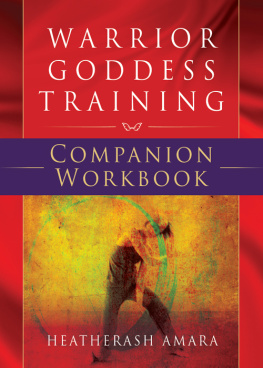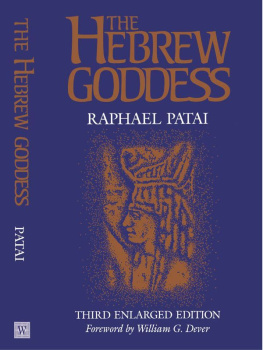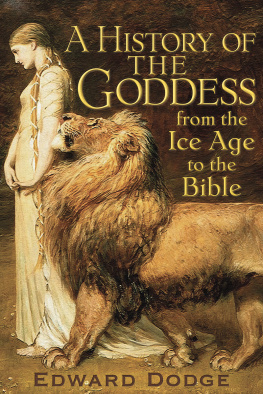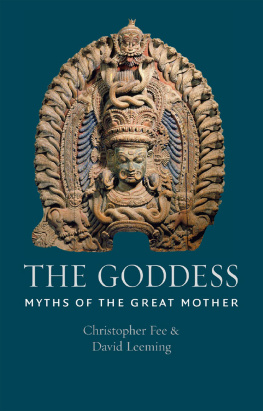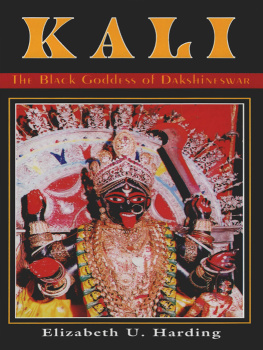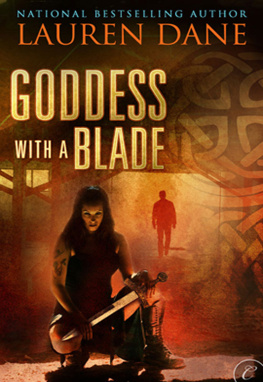SANCTIFYING MISANDRY
Sanctifying Misandry
Goddess Ideology and the Fall of Man
KATHERINE K. YOUNG and
PAUL NATHANSON

McGill-Queens University Press 2010
ISBN 978-0-7735-3615-9
Legal deposit first quarter 2010
Bibliothque nationale du Qubec
Printed in Canada on acid-free paper that is 100% ancient forest
free (100% post-consumer recycled), processed chlorine free
This book has been published with the help of a grant from the Canadian Federation for the Humanities and Social Sciences, through the Aid to Scholarly Publications Programme, using funds provided by the Social Sciences and Humanities Research Council of Canada.
McGill-Queens University Press acknowledges the support of the Canada Council for the Arts for our publishing program. We also acknowledge the financial support of the Government of Canada through the Book Publishing Industry Development Program (BPIDP) for our publishing activities.

Library and Archives Canada Cataloguing in Publication
Young, Katherine K., 1944
Sanctifying misandry: goddess ideology and the Fall of Man / Katherine K. Young and Paul Nathanson.
Includes bibliographical references and index.
ISBN 978-0-7735-3615-9
1. Goddess religion. 2. Fall of man. 3. Sin, Original. 4. Sex role Religious aspects. 5. Misandry. I. Nathanson, Paul, 1947II. Title.
BL473.5.Y66 2010 202.114 C2009-904566-4

Typeset by Jay Tee Graphics Ltd. in 10.5/13 Sabon
Contents
PART ONE FROM GODDESSES TO WITCHES (AND BACK):
REWRITING THE BIBLE
PART TWO FROM REFORM TO REVOLUTION:
RESTORING THE GODDESS
Acknowledgments
We want to thank the Canadian Federation for the Humanities for generously supporting the publication of this book. Thanks also to Monique David for reading and commenting on the manuscript, Maureen Garvie for editing it, and Jenna Preston for helping us in many other ways.
PROLOGUE
The Fall of Man
We have already written two volumes of a trilogy on misandry. The sexist counterpart of misogyny, misandry refers to the hatred of men in secular forms cinematic stereotypes, journalistic excesses, legal manoeuvres, and so on. Still in the works is the third volume of that trilogy. Meanwhile, however, we have found it necessary to write this fourth and more specialized book on misandry in the specific context of religion. Before introducing this book, here is a brief introduction to our earlier work on misandry.
In the trilogys first volume, Spreading Misandry: The Teaching of Contempt for Men in Popular Culture, in particular.
We explained in our first volume that both forms of sexism, misogyny and misandry, refer to culturally propagated worldviews, not merely to transient personal emotions such as anger. Both forms of hatred have moral implications, therefore, not merely psychological ones. And both forms of hatred find expression not only in secular terms but also in religious terms. In the present volume we discuss the relation between secular and religious expressions of misandry. More specifically, we discuss the intimate relation between hostility toward patriarchal culture in general and hostility toward patriarchal religions in particular that is, in the West, toward Christianity and Judaism.
Slightly more familiar than the word misandry is the word ideology. We explained that word, too, in our first volume. For non-academics, the latter means nothing more than a system of ideas (probably because idea sounds like ideology). Any philosophy or worldview, therefore, could be an ideology. We use this word in a much more disciplined way, though not that of most academics. Modern political and philosophical movements on both the political left (deriving from the Enlightenment through Marxism) and the political right (deriving from Romanticism) share characteristic features that differentiate them from other political and philosophical movements. Characteristic features of ideology in this sense include the following: essentialism (proclaiming that we are innately good); dualism (proclaiming that they are innately evil); hierarchy (drawing the conclusion that we are innately better than they are); collectivism (succumbing to identity politics); utopianism (creating an ideal society now instead of waiting for divine intervention); revolutionism (advocating radical change, not incremental reform); selective cynicism (attributing evil motives to them); consequentialism (arguing that even an evil means can justify a good end); and quasi-religiosity (adopting religious means such as rituals, special texts, special times, and special places for primarily secular ends). With this in mind, in that first volume, we identified ideological feminism as very problematic.
The trilogys second volume, Legalizing Misandry: From Public Shame to Systemic Discrimination against Men,feminists often refer instead to womens equality, even though there can be no such thing as either that or mens equality). Before heading into the various legal minefields divorce, custody, domestic violence, sexual harassment, and so on we examined the journalistic aspect of popular culture. And we found that journalists, no less than filmmakers and advertising firms, have presented men as a truly sinister class one that presumably deserves public denunciation on a routine basis and even legalizes hostility on an institutional basis. Whether public acceptance of their negative stereotypes came before or after the legalization of misandry is another matter. The two phenomena are so closely linked that it makes no difference for practical purposes.
Transcending Misandry: From Ideological Feminism to Intersexual Dialogue begins with a cross-cultural and historical but not feminist study of men. It concludes with a discussion of dialogue between men and women. Our notion of intersexual dialogue originated in that of interreligious dialogue, but it differs in at least two ways. First, it is more formal (and more disciplined) than the casual conversations that usually go on in church or synagogue basements. Second, it is less formal (and less bureaucratic) than the ecumenical projects of ecclesiastical institutions. We hope that other conflicting groups will find our method helpful.
Our premise in this new book is that the religious wing of ideological feminism has tried to rewrite the biblical story of redemption. It begins in the paradisal Garden of Eden, continuing with the sin of our primeval parents, exile from paradise, history as we know it but with the promise of redemption, and an eventual return to paradise. Christians refer to the part about sin as the Fall of Man. And they understand the word man in its generic sense as a reference to all men and all women. Some feminists now, though, refer to man in its literal sense as a reference to men. In other words, the suffering that we have experienced throughout history is due to an original sin of our primeval male ancestors.
Who are these feminists, these religious counterparts of ideological feminists? We call them goddess ideologues (partly to distinguish them from those who advocate gender-inclusive forms of goddess religion). Rejecting the supposedly male god of Christianity or Judaism, they invoke a great goddess. She is now returning to save the world, they say, after being banished by the gods of men approximately ten thousand years ago.
Next page

